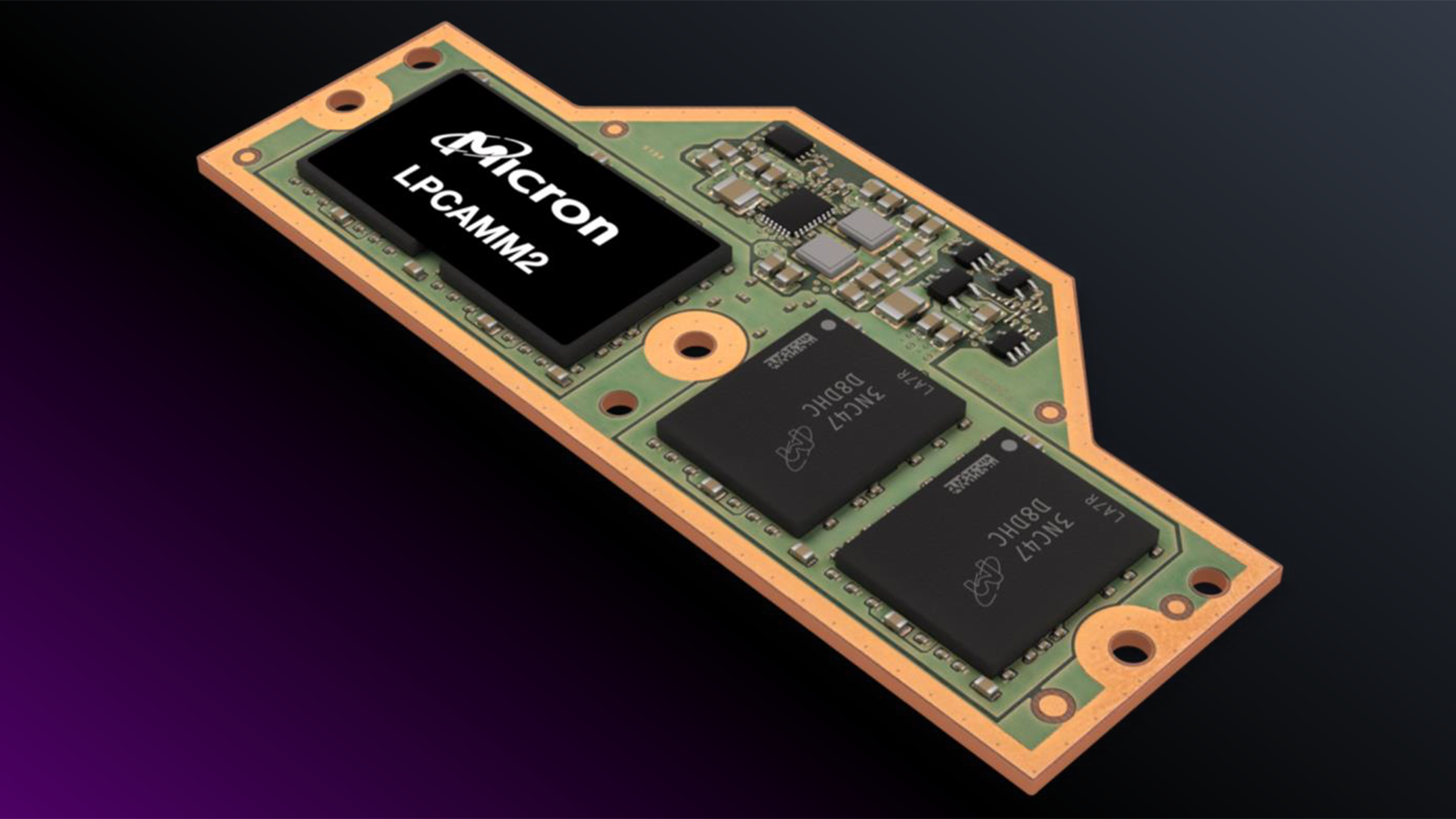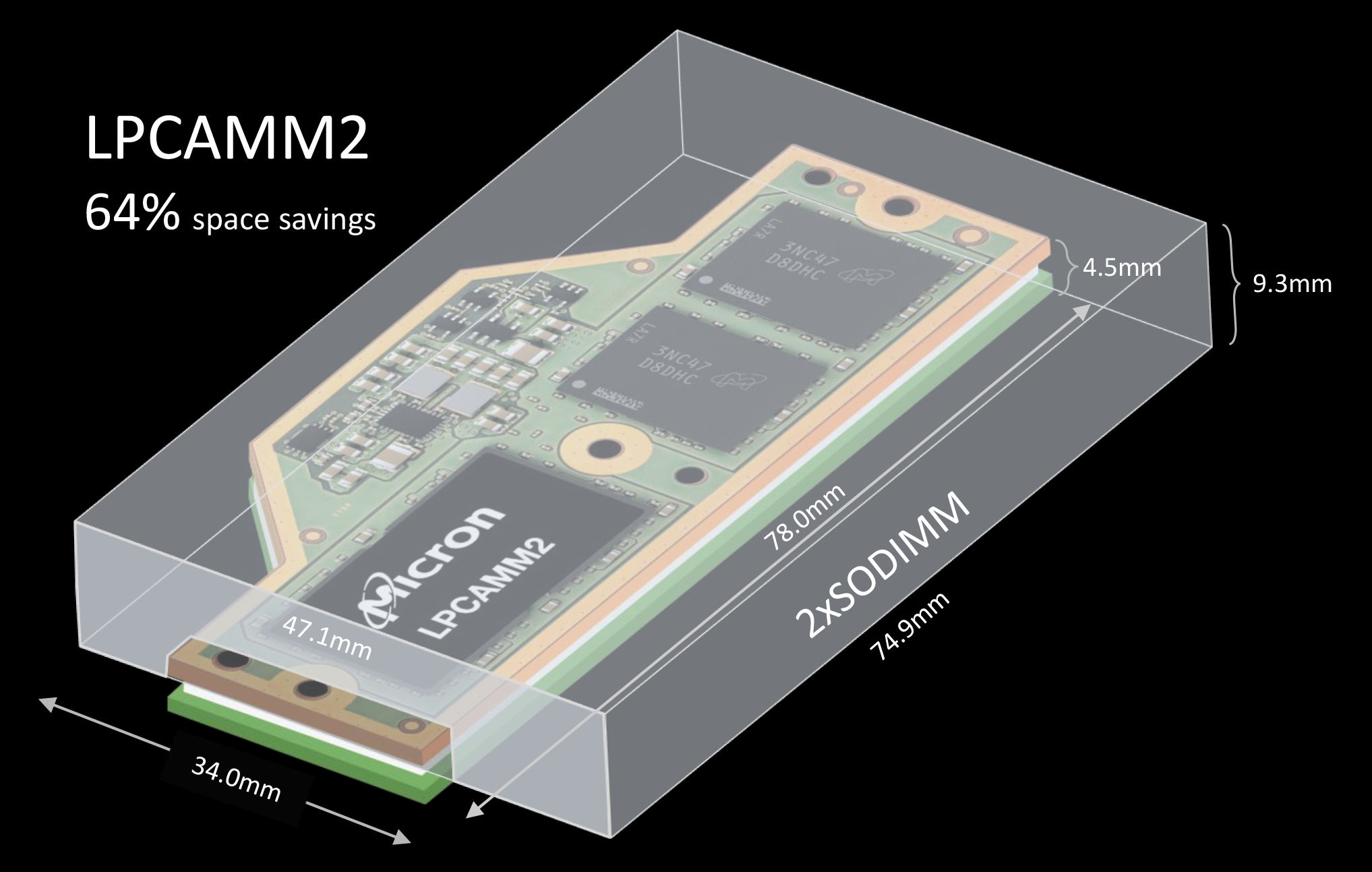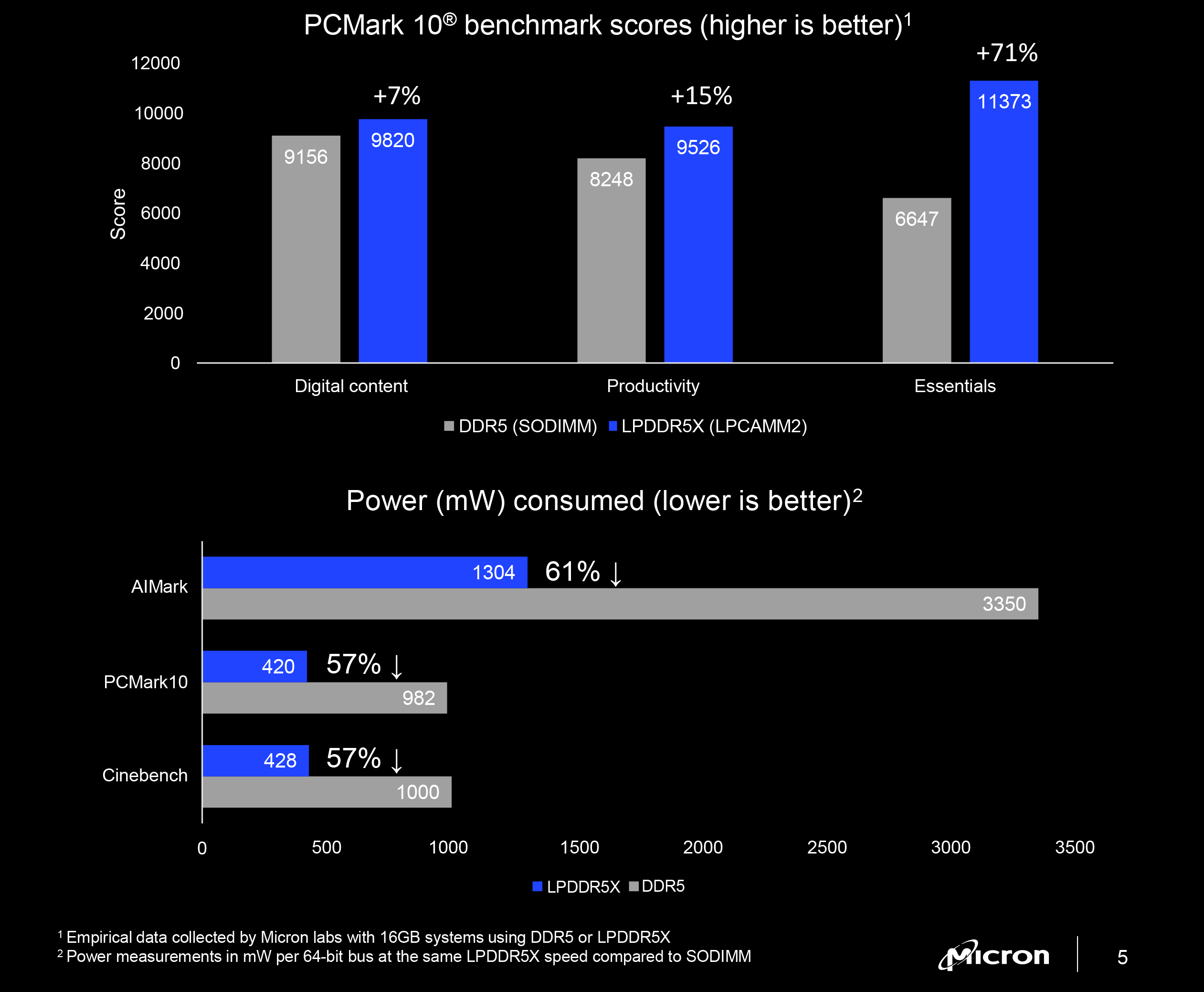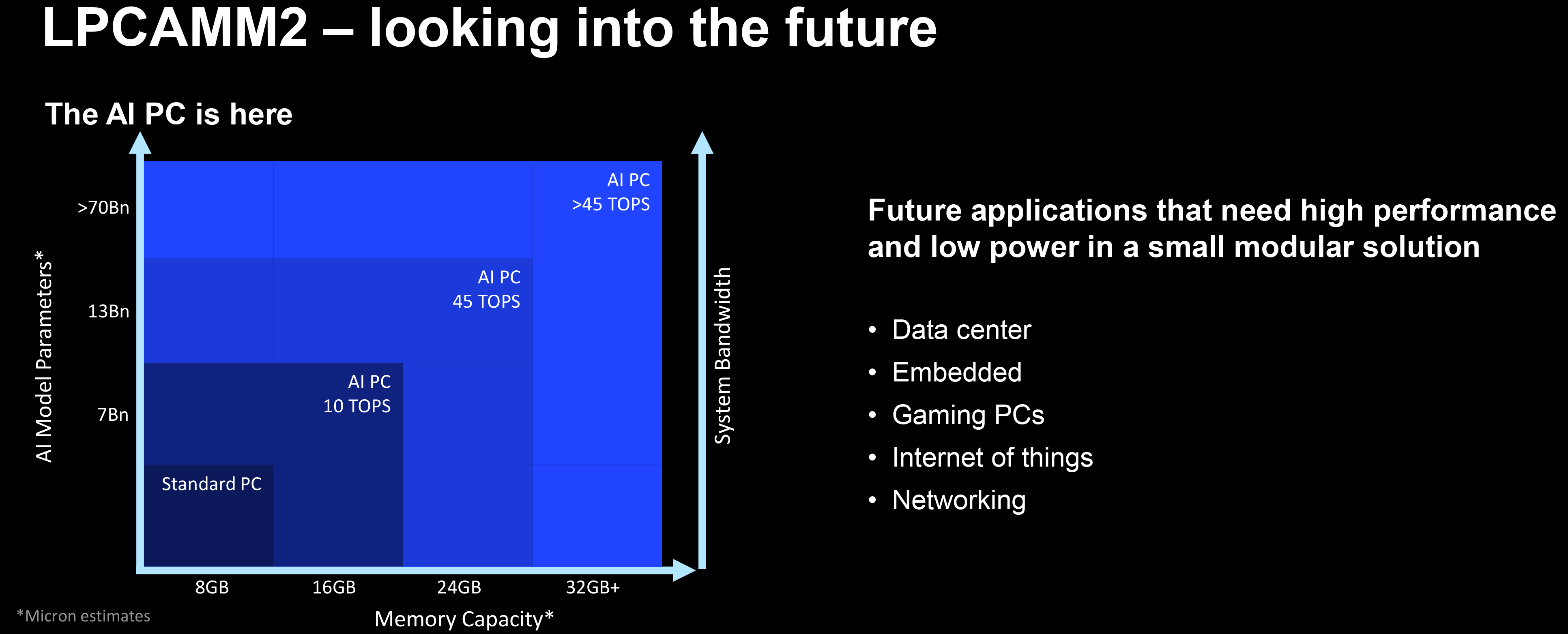
Micron has announced a lineup of the industry's first standard low-power compression attached memory modules (LPCAMM2), combining high performance, low power consumption, and relatively high capacity. The new memory sticks based on LPDDR5X memory are designed both for laptops and desktops and are set to co-exist with traditional SODIMMs for at least several years.
Micron's LPCAMM2 modules — which are set to be available in 16GB, 32GB, and 64GB capacities — are based on LPDDR5X memory and therefore support data transfer speeds up to 9,600 MT/s, which is considerably higher than 6,400 MT/s supported by DDR5 SODIMMs, according to Micron. Although LPDDR5X memory may be slightly slower compared to DDR5 when it comes to latencies, it can be offset by higher data transfer rates and other benefits that the Mobile DRAM has. Furthermore, Micron says that the modular form factor does not extend the latencies of LPDDR5X memory compared to soldered-down LPDDR5X memory subsystems.
Another benefit of LPDDR5X memory is that it features up to 43-58% lower active power per 64-bit bus at the same speed as DDR5 and up to 80% lower standby power, Micron claims. Yet, just like DDR5 modules, LPCAMM2 modules carry a power management IC and voltage regulating circuitry, which can provide additional ways for module makers to reduce the power consumption of their products.

Meanwhile, an LPCAMM2 module features a 128-bit memory interface, which means that only one of these modules is needed to saturate the memory interface of modern processors for laptops, such as Intel's 14th Generation Core 'Meteor Lake' CPUs. This not only allows designers to make laptops with 128-bit memory thinner, it also simplifies memory subsystems and makes them cheaper.
"Micron is transforming the laptop user’s experience with the LPCAMM2 product that will deliver best-in-class performance per watt in a flexible, modular form factor," said Praveen Vaidyanathan, Vice President and General Manager of Micron’s Compute Products Group. "This first-of-its-kind product will enhance the capabilities of AI-enabled laptops, whose memory capacity can be upgraded as technology and customer needs evolve."
When compared to two SODIMMs, an LPCAMM2 module offers 64% space savings, which is a big deal for thin laptops. To make LPCAMM2 modules considerably smaller than two DDR5 SODIMMs, Micron vertically integrates multiple LPDDR5X memory devices, thus essentially using advanced packaging technology. For example, 64 GB LPCAMM2 modules use four 8-Hi LPDDR5X packages.

Meanwhile, the main advantage of Micron's LPCAMM2 — modularity that provides a lot of flexibility for PC OEMs, reparability, and an upgrade path for the end user — is also its disadvantage (at least for now) since these modules offer a maximum of 64GB, reducing their appeal to mobile workstations that need more memory. This is perhaps why Micron does not expect LPCAMM2 to replace SODIMMs for now, as the latter provides enough advantages both for inexpensive and high-end laptops and small form-factor desktops.
Micron says that the LPCAMM2 specification, the development of which it sponsored at JEDEC, is both backward and forward-compatible. The modules can use commodity DDR5 memory, though Micron does not see any value in using this type of DRAM with LPCAMM2 modules. Meanwhile, LPCAMM2 supports LPDDR6, so once the new type of memory arrives and gains support from laptop CPUs, Micron will be able to build even faster LPCAMM2 modules.
Lenovo is set to be one of the first companies to use Micron's LPCAMM2 memory modules for some of its notebooks, though it is going to take some time before the standard takes off.
"LPCAMM2 is a dynamic new form factor for the PC ecosystem that enables higher performance, scalable memory capacity, and improved battery life for mobile workstations and thin and light laptops," said Yasumichi Tsukamoto, executive director and distinguished engineer, Commercial Product Solutions Development at Lenovo.
For now, LPCAMM2 memory modules will be available exclusively from Micron, but other companies, including Samsung, are also prepping LPCAMM modules. Meanwhile, it should be noted that Micron believes that LPCAMM2 modules will be able to address not only small form-factor desktops and laptops, but also other types of applications, including embedded, edge computing, and networking solutions. As a sign of times, Micron naturally mentions artificial intelligence workloads among those that can benefit from high-capacity small form-factor memory modules.








